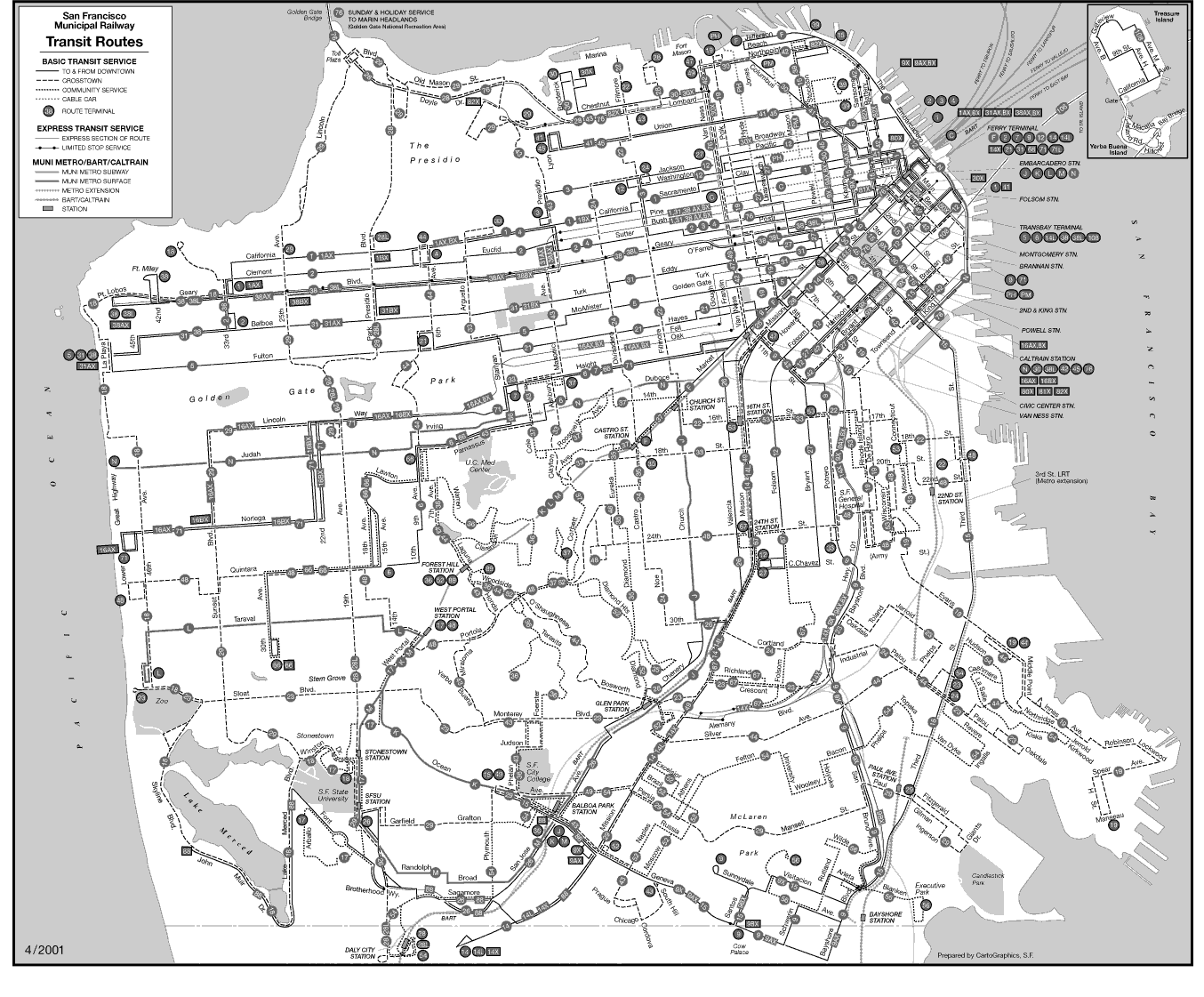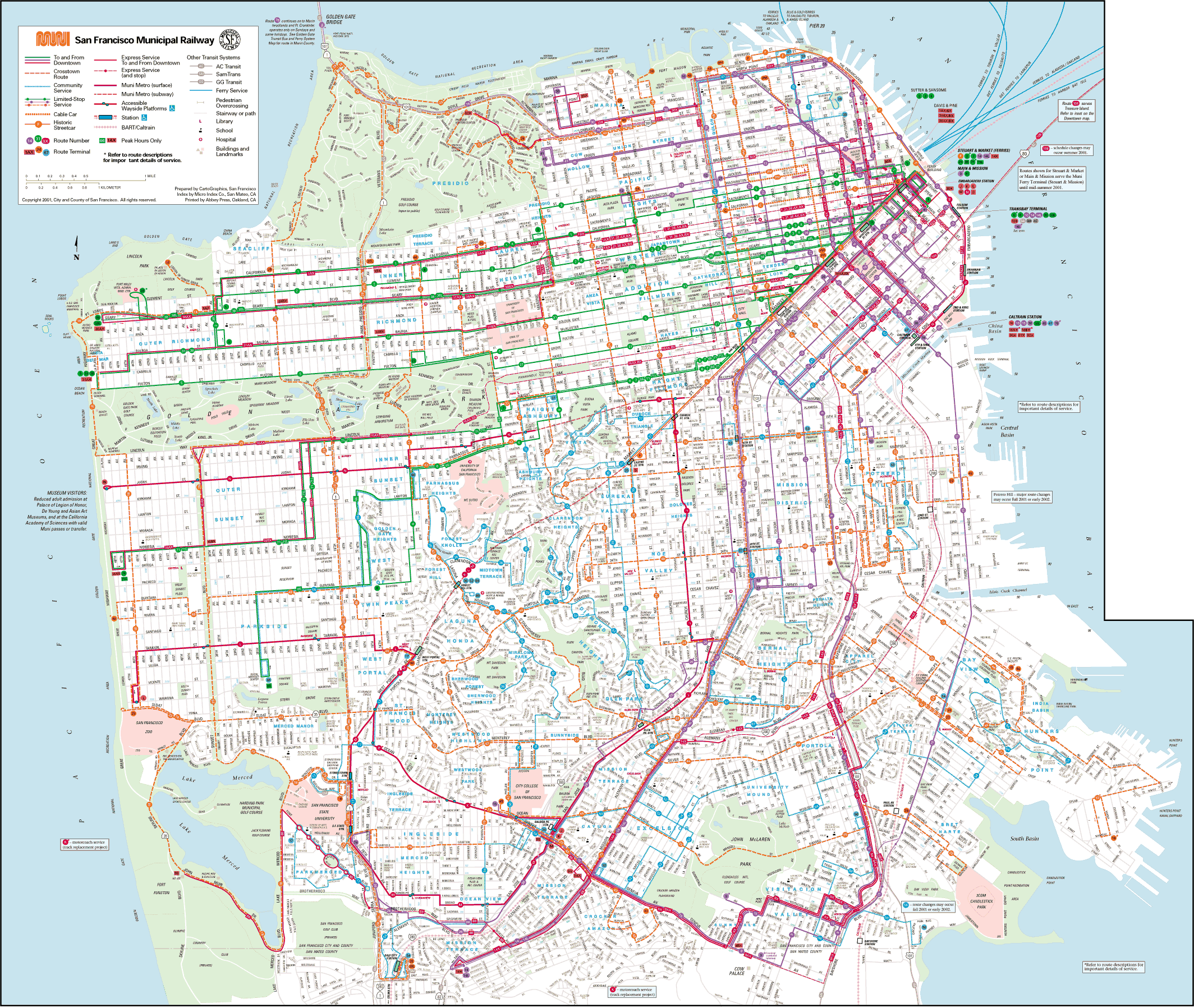
: 42 The 35-Howard line originally ran from the Ferry Building along Howard, South Van Ness, and 24th to that street's intersection with Rhode Island. The R-Howard line was introduced specifically so that Muni could undercut MSRy's prices on its parallel routes on Mission Street. : 42 R-Howard was built on the original route of the sparsely ridden No. 35 streetcar line MSRy's franchise to operate the No. 35 had expired at the end of the 1930s. On September 7, 1941, Muni introduced its first trolleybus line to compete with MSRy, the R-Howard line, using vehicles built by the St. Overhead wires for trolleybuses, viewed southwest along the south side of Howard Street, near Moscone Center.

After riding the trackless trolley, the editor of the San Bernardino Sun published a rumor that all streetcar service would eventually be replaced with trolleybuses. : 44 The current 33-Ashbury trolleybus route still runs on a portion of that route. At the time of conversion, the No. 33 streetcar operated between Third & Harrison ( Downtown) and Waller & Stanyan ( Golden Gate Park), a round trip of 10.2 miles (16.4 km). That route initially ran along 18th from Guerrero to Douglass before being extended to Frederick and Ashbury including a sharp hairpin turn on the lower slopes of Twin Peaks at Market and Clayton by May 1894.

: 39, 44 The No. 33 Line had been originally established in 1892 by the San Francisco & San Mateo Railway Company as the 18th and Park or 18th Street Branch route. By early August of that year, the Market Street Railway Company (MSRy), successor to the URR, applied to the State Railroad Commission to operate the first trackless trolley system in California permission was granted by August 30, and the first trolleybus service started on October 6, 1935, using 9 coaches built by Brill. 33 Line streetcar to "trackless trolley", as some of the tracks would have to be taken up for the construction of the Bay Bridge. Skeggs of the State Highway Department urged the conversion of the No. A city ordinance requiring streetcars to use two operators also served to encourage trolleybus deployment. Long a hub of streetcar development, San Francisco already had much of the overhead wire infrastructure necessary to deploy trolleybus service on existing city streets. 33 trolleybus route established by Market Street Railway in 1935. Preserved Muni trolleybus 776 photographed in 2012 at Market and Clayton on the original No. The system includes the single steepest known grade on any existing trolley bus line in the world (22.8% in the block of Noe Street between Cesar Chavez Street and 26th Street on route 24-Divisadero), and several other sections of Muni trolley bus routes are among the world's steepest. One of only five such systems currently operating in the U.S., the Muni trolley bus system is the second-largest such system in the Western Hemisphere, after that of Mexico City. In addition, it shares some of its overhead wires with the F Market & Wharves streetcar line. The Muni trolley bus system is complementary to the city-owned Muni bus services, Muni Metro and cable car system and the rail-bound regional Caltrain and Bay Area Rapid Transit systems.

In 2022, the system had a ridership of 33,664,000, or about 108,200 per weekday as of the fourth quarter of 2022. In San Francisco, these vehicles are also known as "trolley coaches", a term that was the most common name for trolleybuses in the United States in the middle decades of the 20th century. Opened on October 6, 1935, it presently comprises 15 lines, and is operated by the San Francisco Municipal Railway, commonly known as Muni (or the Muni), with around 300 trolleybuses. The San Francisco trolleybus system forms part of the public transportation network serving San Francisco, in the state of California, United States.

San Francisco Municipal Railway (1941–present) An XT60 trolleybus on route 5-Fulton in December 2017


 0 kommentar(er)
0 kommentar(er)
